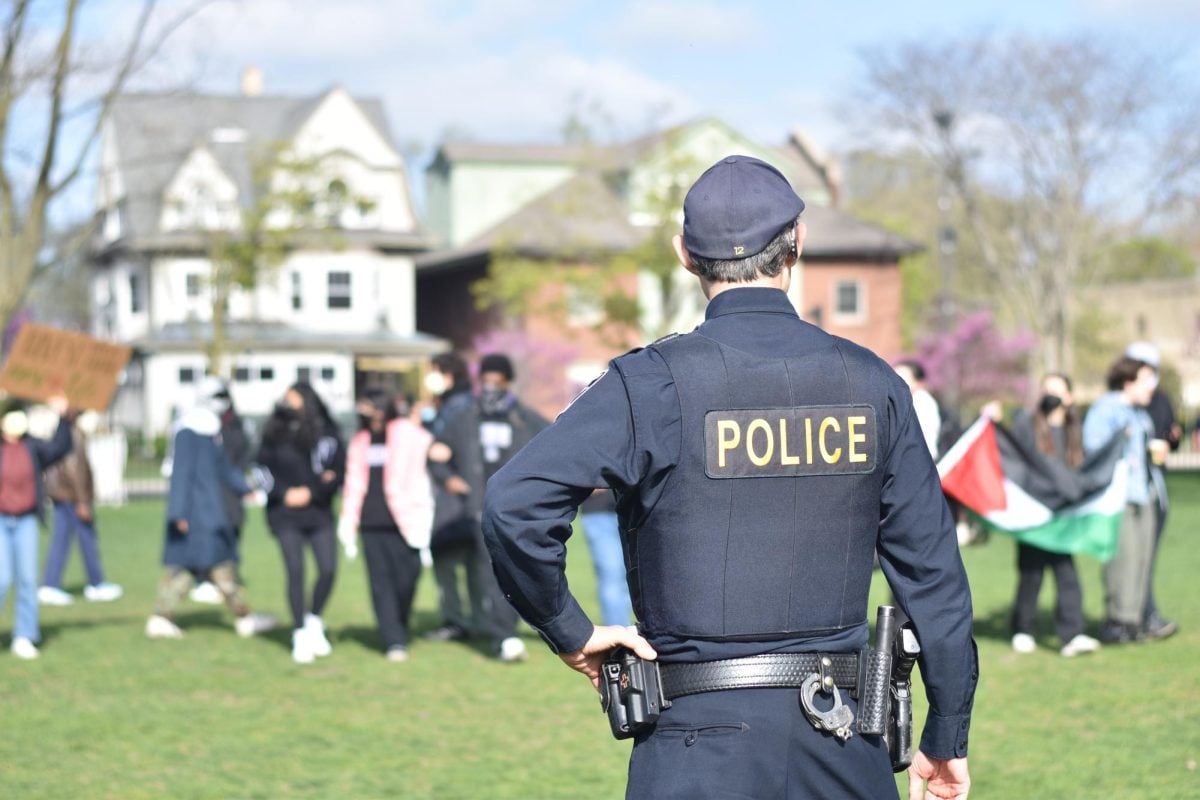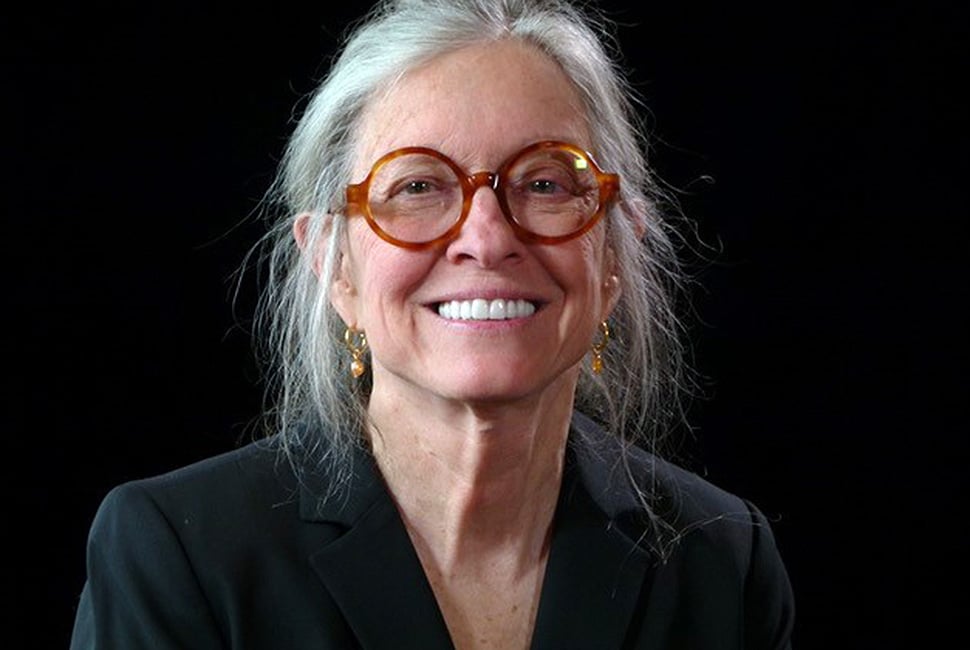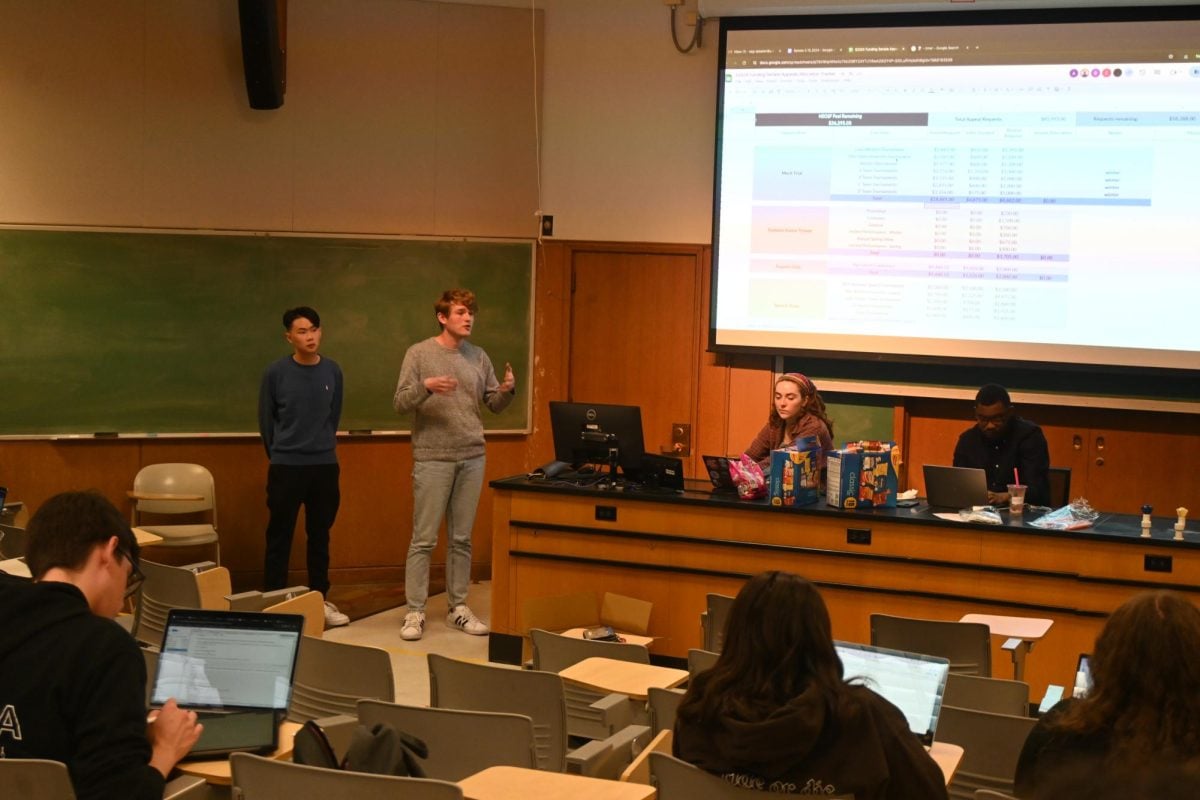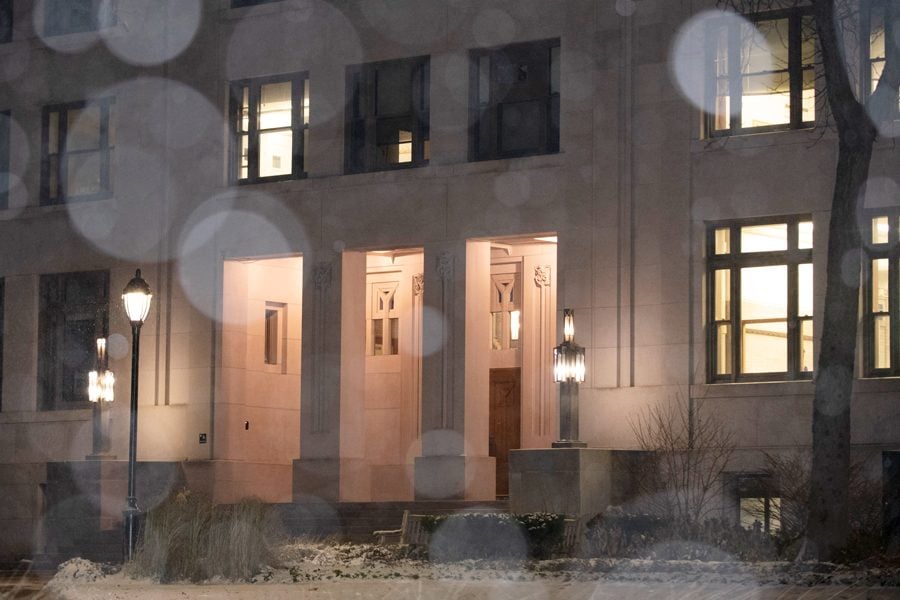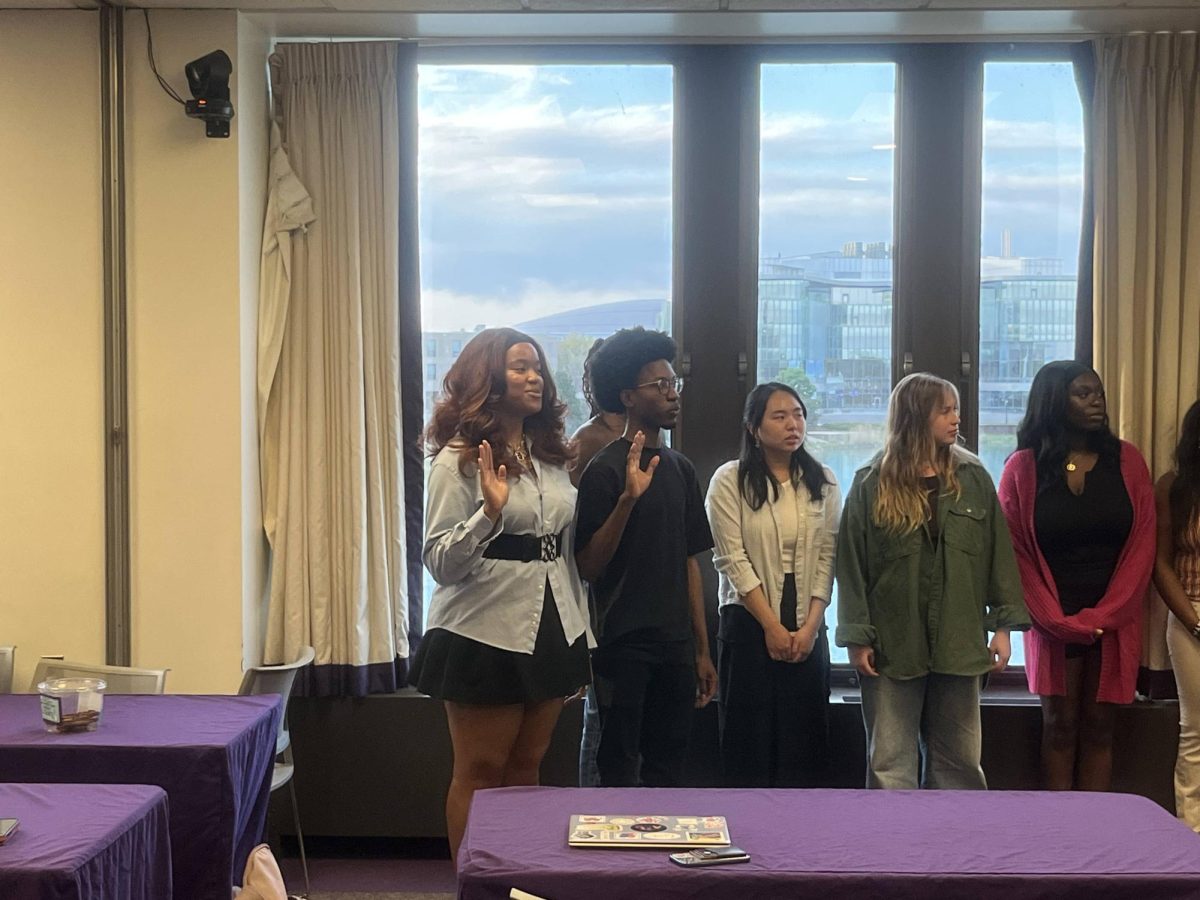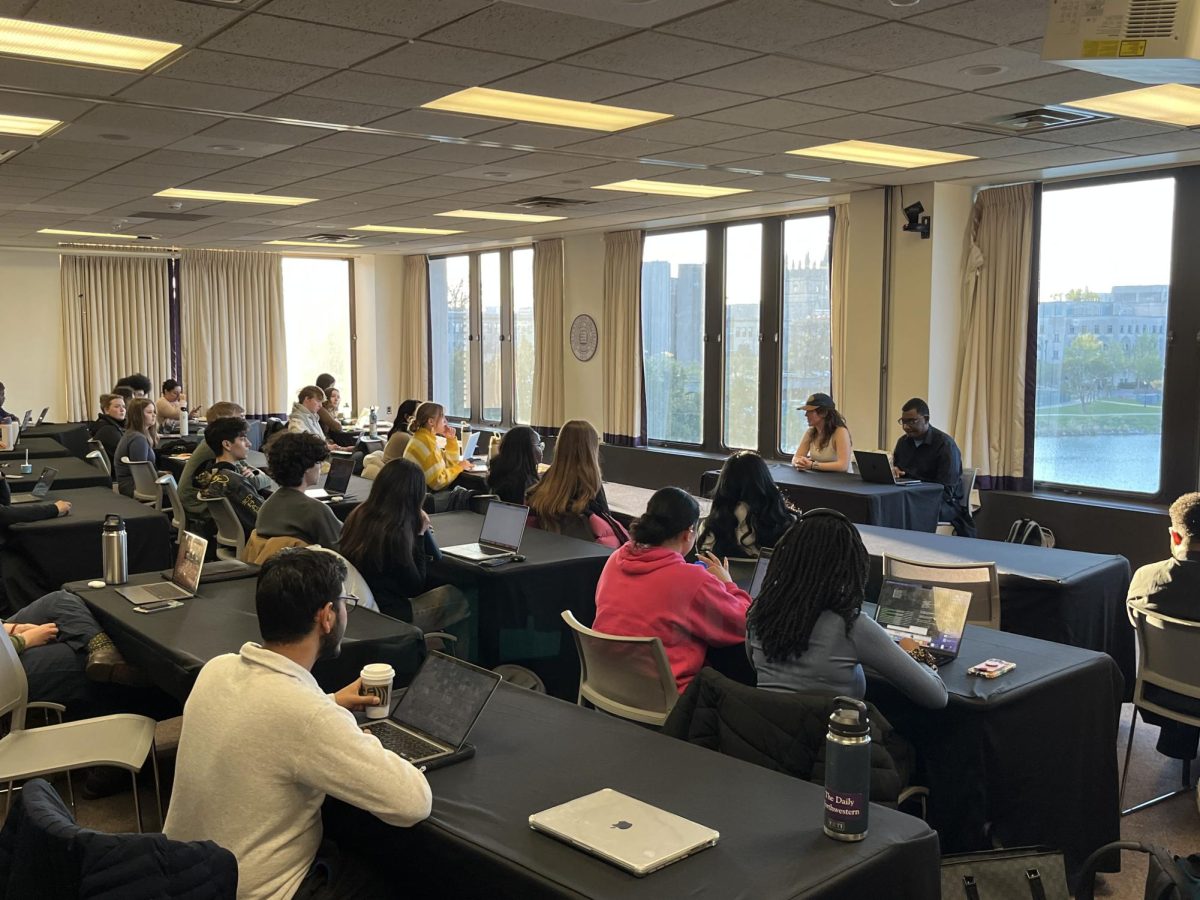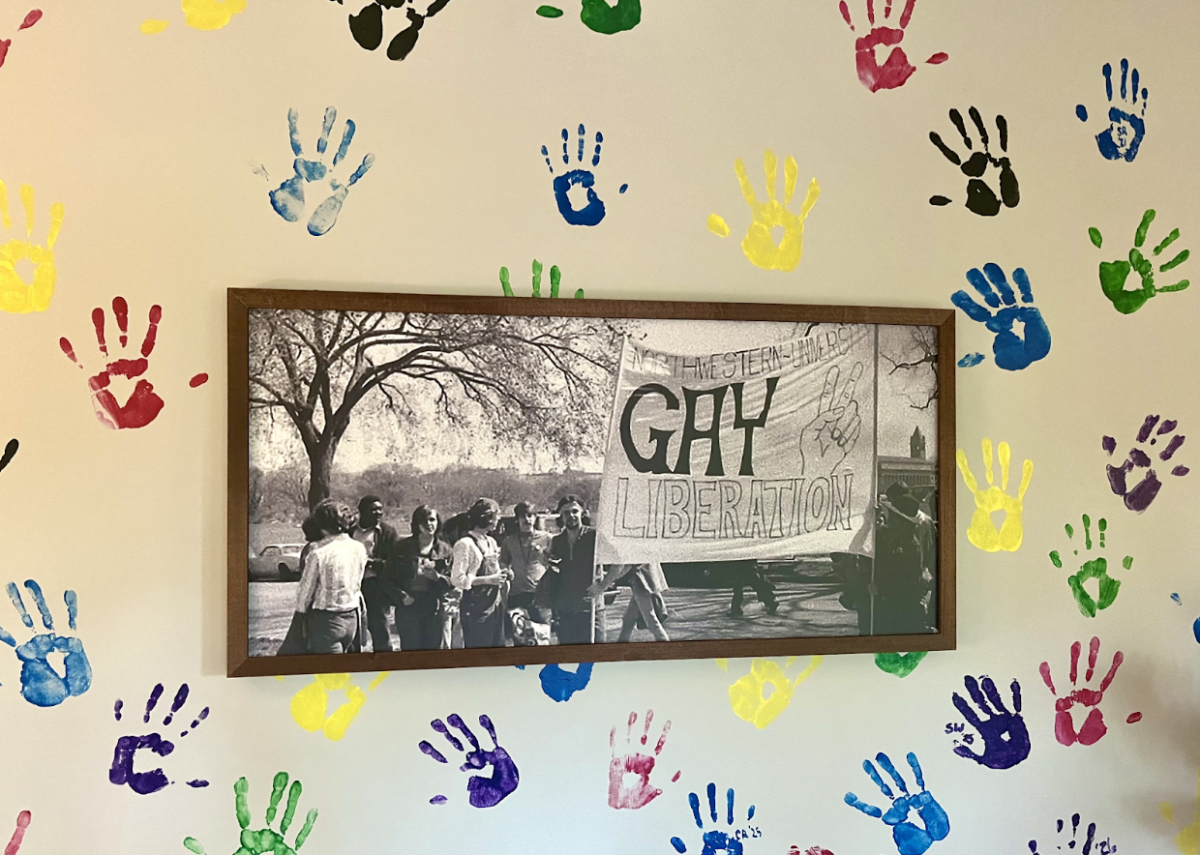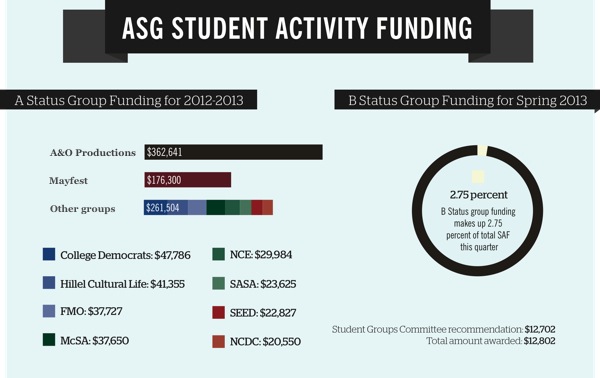
Last Wednesday, Medill junior Tegan Reyes set foot in her first Associated Student Government Senate meeting to appeal for more funding for the student group she co-chairs, Relay For Life.
Reyes hoped to appeal to the Senate for more funding so that their group could have a photo booth for students to use at their annual philanthropy event. Relay For Life asked ASG for $400 for the photo booth, but the Student Groups Committee, which determines funding for B-status groups like Relay for Life, chose to allocate them only $200.
But Reyes said the process was much more “disappointing” than she expected when she attended the Senate meeting to appeal for more money. Their request quickly turned into a long back-and-forth, where senators and the Relay For Life co-chairs presented pros and cons about awarding the funding. Weinberg senior Lauren Masterson, ASG’s Student Groups vice president, told the Senate her committee had decided before the meeting to not allocate Relay For Life the full money because the photo booth was not essential to the event and because there was no precedent for one to be present there. The Senate eventually sided with Masterson.
“It didn’t seem like an attack, but it just seemed like there was a lot going on,” Reyes said. “I did feel that it was a little harsh.”
Reyes also said part of the challenge of appealing to ASG was a lack of knowledge about how the process works. She said she didn’t even realize there would be pro and con speeches and debate when she went to Senate. She also said her group was advised by a representative of ASG to continue appealing for lesser and lesser values of money at the meeting, which eventually backfired and frustrated the senators.
“If maybe they made more information available and more people actually did appeal, it would be better,” Reyes said. “I don’t even know where you would get that information.”
Both Reyes and Masterson noted that at B-status funding Senate meetings, most groups don’t even appeal for additional funding.
“There’s a lot of apathy,” Masterson said. “A lot of groups think it’s not worth it for them to come in.”
Masterson said she was glad the group came out to appeal for more money, even though she sticks by her original recommendation to only give the group $200.
“I’m glad they came in and tried to operate within the system,” Masterson said. “It’s a good thing to have that kind of debate at Senate.”
But Reyes does not feel the same.
“I was uncomfortable with it, and I probably won’t go to another Senate meeting,” Reyes said.
Breaking down the ‘B’
This quarter, ASG awarded a total of $12,802 to B-status groups for Spring Quarter, and Masterson said due to an increase in applicants, the process was more difficult than ever before. B-status groups, which receive funding quarterly, have been ASG-recognized for more than a year and demonstrate a need for minimal Student Activities Fee financing. Every year, a portion of student tuition goes toward the SAF. These groups receive 2.75 percent of the total SAF, which translates to about $36,000 annually.
In order to receive B-status funding, Masterson said the Student Groups Committee expects groups to plan their events a quarter in advance. Midway through the quarter, they turn in an application for funding to group executives and Masterson. The committee meets and then recommends a funding amount for each group, which is then presented to Senate. After a week of deliberation, Senate then votes on the funding as old business at the next week’s meeting, where students like Reyes have the opportunity to appeal the Student Groups Committee’s decisions.
Of the 91 B-status eligible groups, 47 applied for funding this quarter, Masterson said. This is an increase from the typical 30 to 35, she explained.
“Even though it makes our job harder, I want more groups applying for B-status funding,” Masterson said. “We could potentially have an increase in the percentage of the funds for B-status groups, even if that makes things harder in the short-run.”
Achieving the ‘A’
B-status groups receive such a small percentage of the SAF because the majority, about 92 percent, goes to funding for A-status groups, ASG-recognized groups that have shown a history of merit, growth and ability to properly use funds. Funding for A-status student groups annually is governed primarily by the Student Activities Finance Committee, a board of 12 associate executive members that is chaired by Girish Pendse, ASG financial vice president. The committee advises the ASG Senate on how to allocate more than $1 million to about 40 groups every year. The committee is also required to leave at least five percent of the Spring funding for supplemental funding.
“Working on this committee is an impactful way to get involved with improving student group culture on campus,” said Pendse, a Weinberg senior. “People really love the groups that they work with and want them to succeed.”
Spring funding is when the committee plans out its recommendation for the next academic year. At the beginning of Spring Quarter, the committee sends out applications for funding to student groups. After applying, each group is required to meet with the committee and present a proposal. As soon as all groups have met with the committee, SAFC members spend about two weeks debating how much funding each group needs and creating a final recommendation.
Student groups are given funds depending on two main qualifications: merit and event attendance, said SAFC associate executive Jason Arnold, a McCormick sophomore. Although no definite equation for measuring merit exists, the committee primarily looks at each group’s history of event attendance and success, he said.
“We base it off of the group’s individual growth,” he said. “Sometimes there’s a big boom and we reward them for that.”
When the committee finalizes its budgeting proposal, it meets with the student groups for a final time to disclose its decisions. Although this gives groups a chance to ask questions and express concerns, the committee usually stands by its recommendations, Arnold said.
During the sixth week of Spring Quarter, the committee presents its proposal to the ASG Senate. Although the Senate has the power to follow the recommendations or not, it usually trusts the committee’s judgment, said Pendse.
Student groups are only required to come to the meeting if they want to contest the committee’s recommended allocation of funding. Last year, only about two groups showed up to the meeting, Arnold said.
“Generally, people believe in the system,” said Pendse.
Masterson said an important part of that system is allowing people to come to Senate to contest the committees’ recommendations because students making funding recommendations are not elected by the student body, while the senators are.
“It keeps us in check,” she said.
But not all students see this opportunity as a feasible option.
“People don’t know much about it or they just decide not to appeal,” Reyes said. “It seemed like it was not actually something you could do.”
Correction: A previous version of the graphic above this post misstated the A-status group receiving $176,300. That group is Mayfest. The Daily regrets the error.











